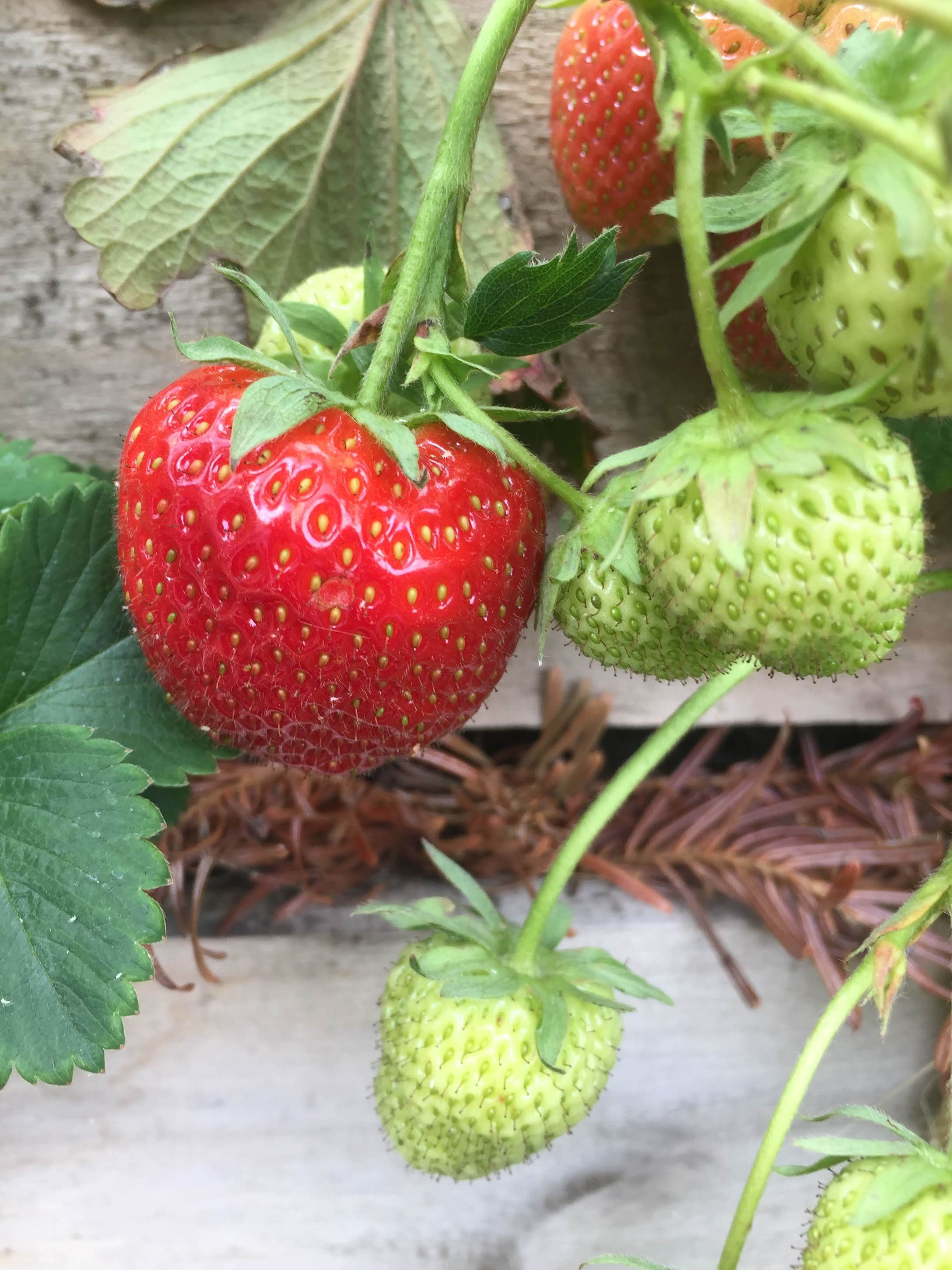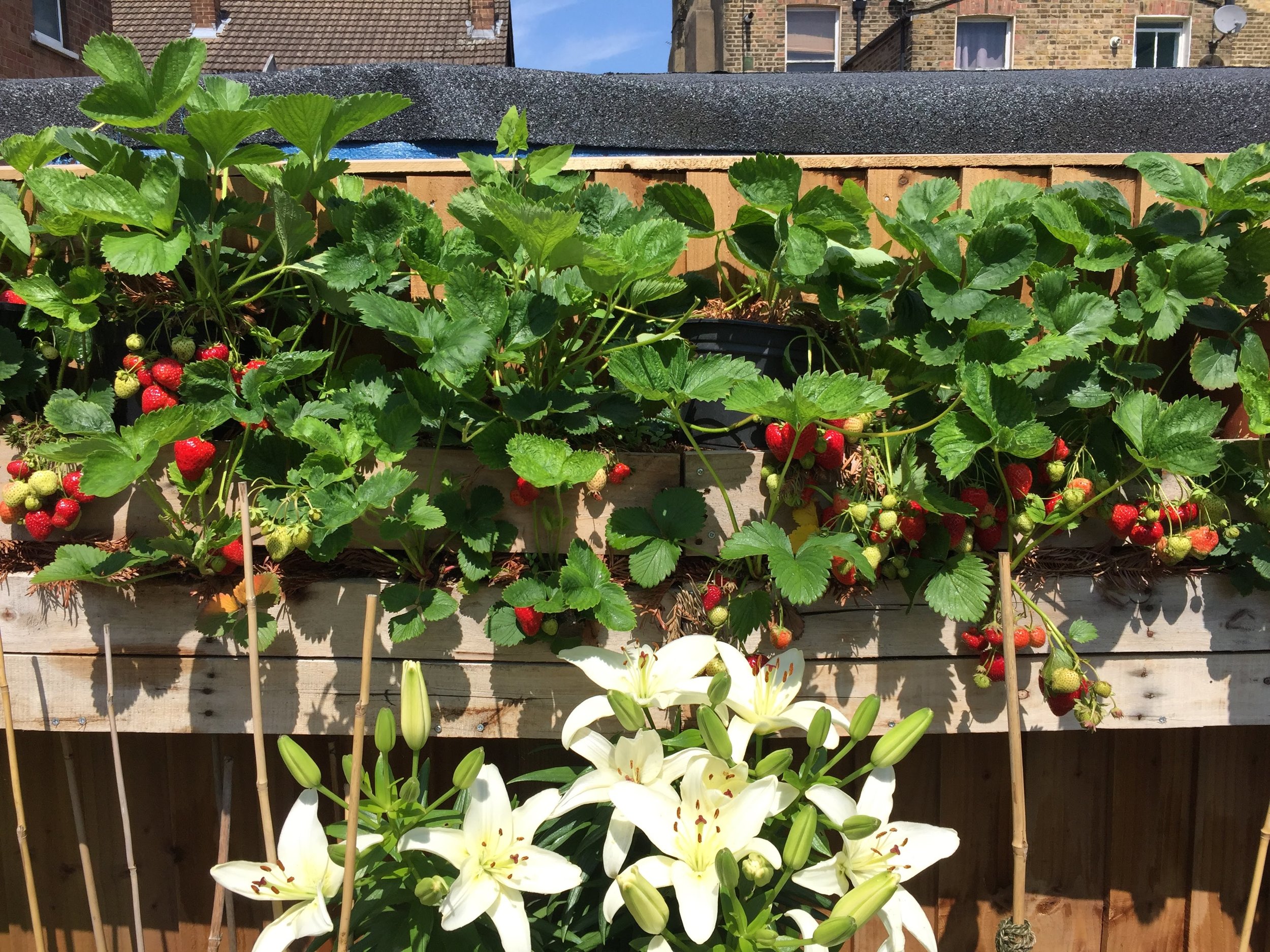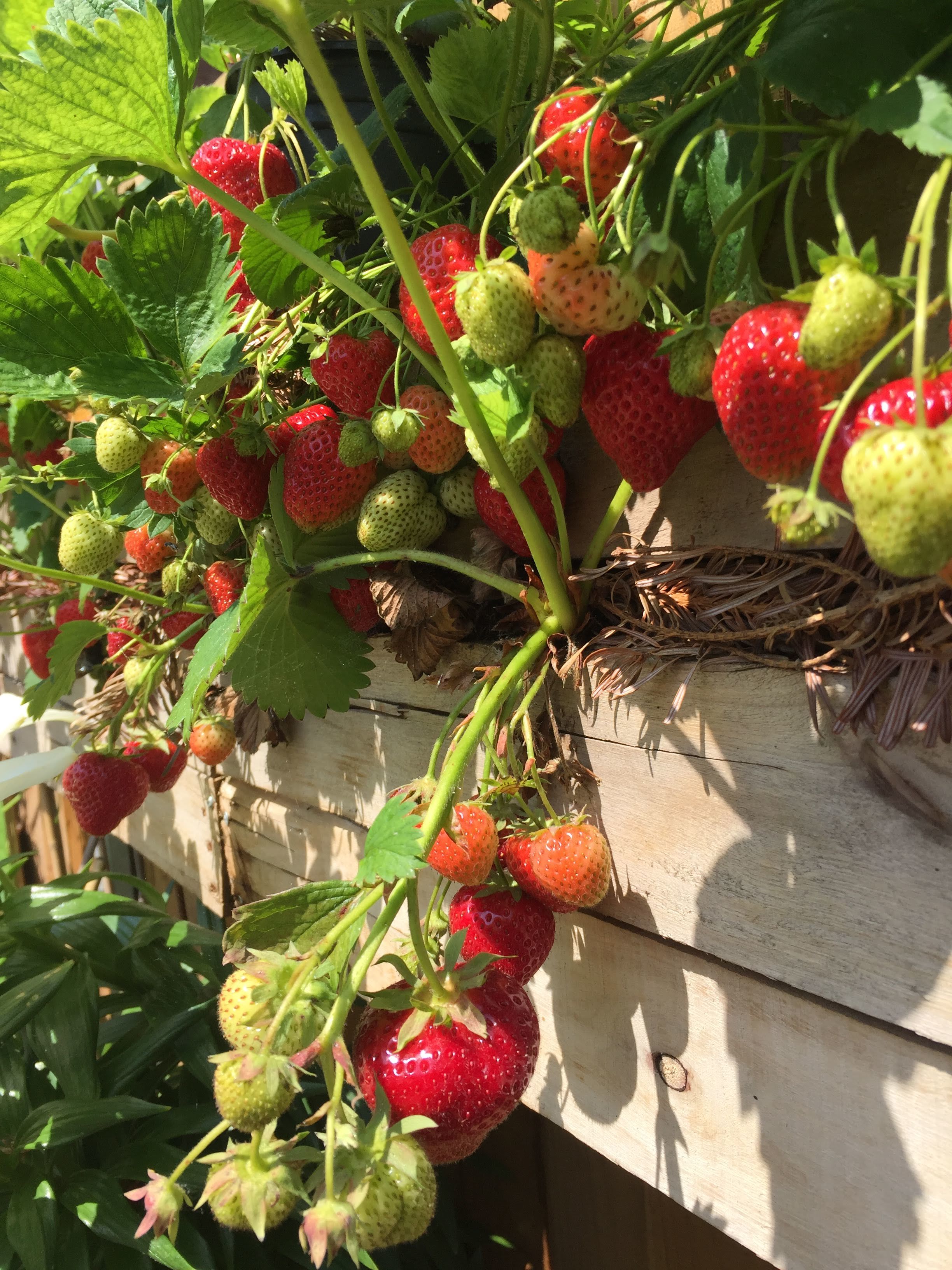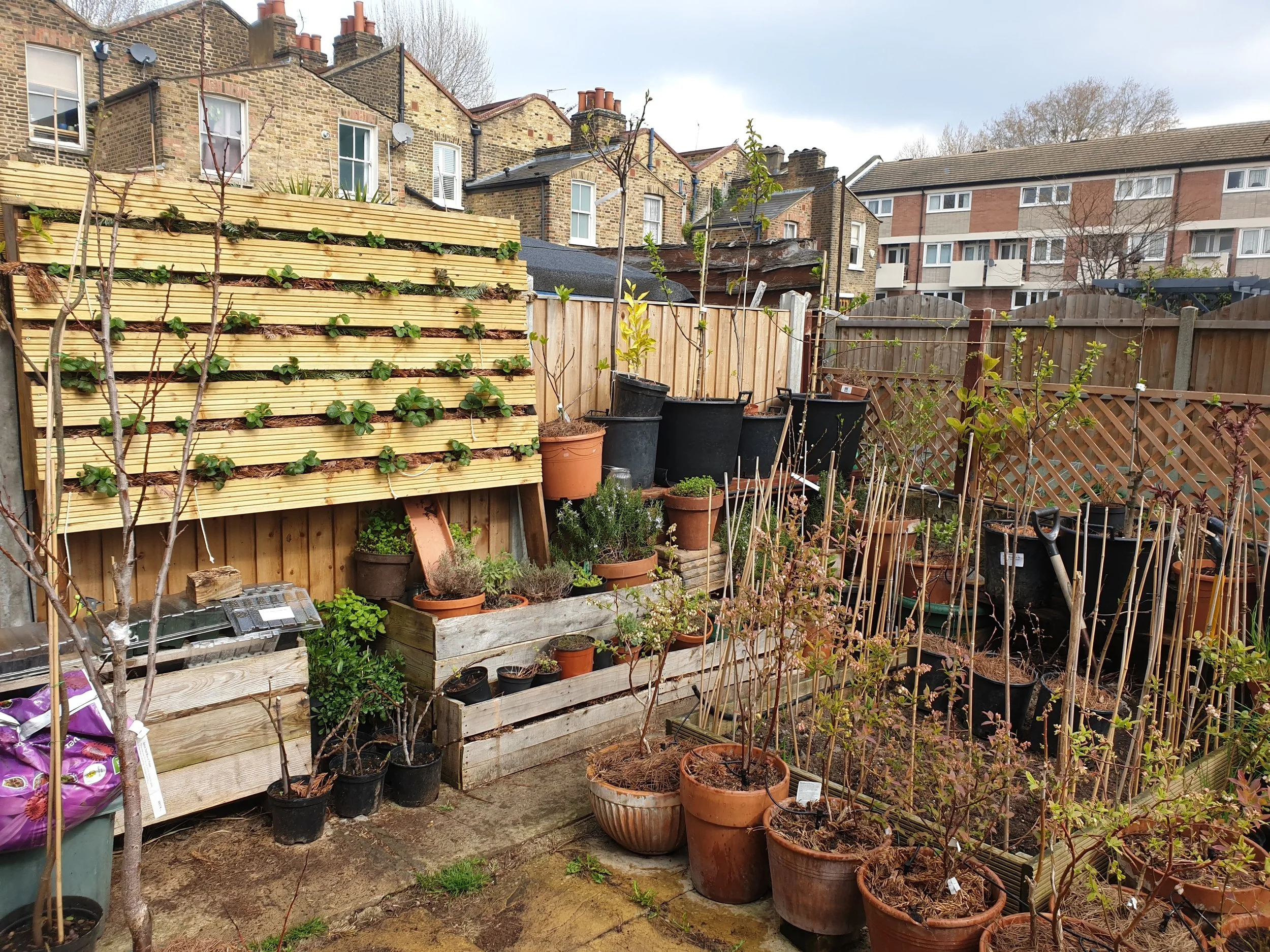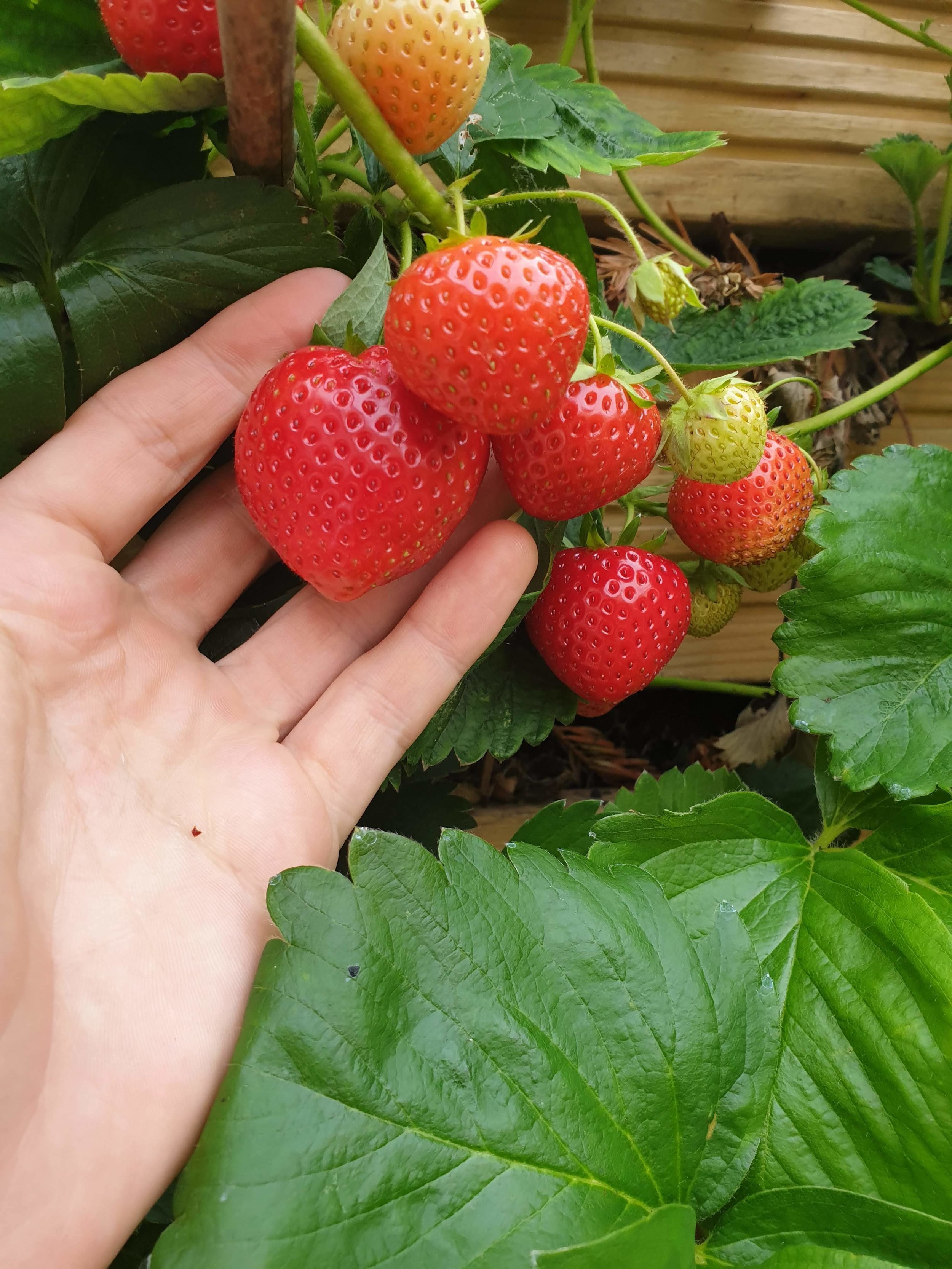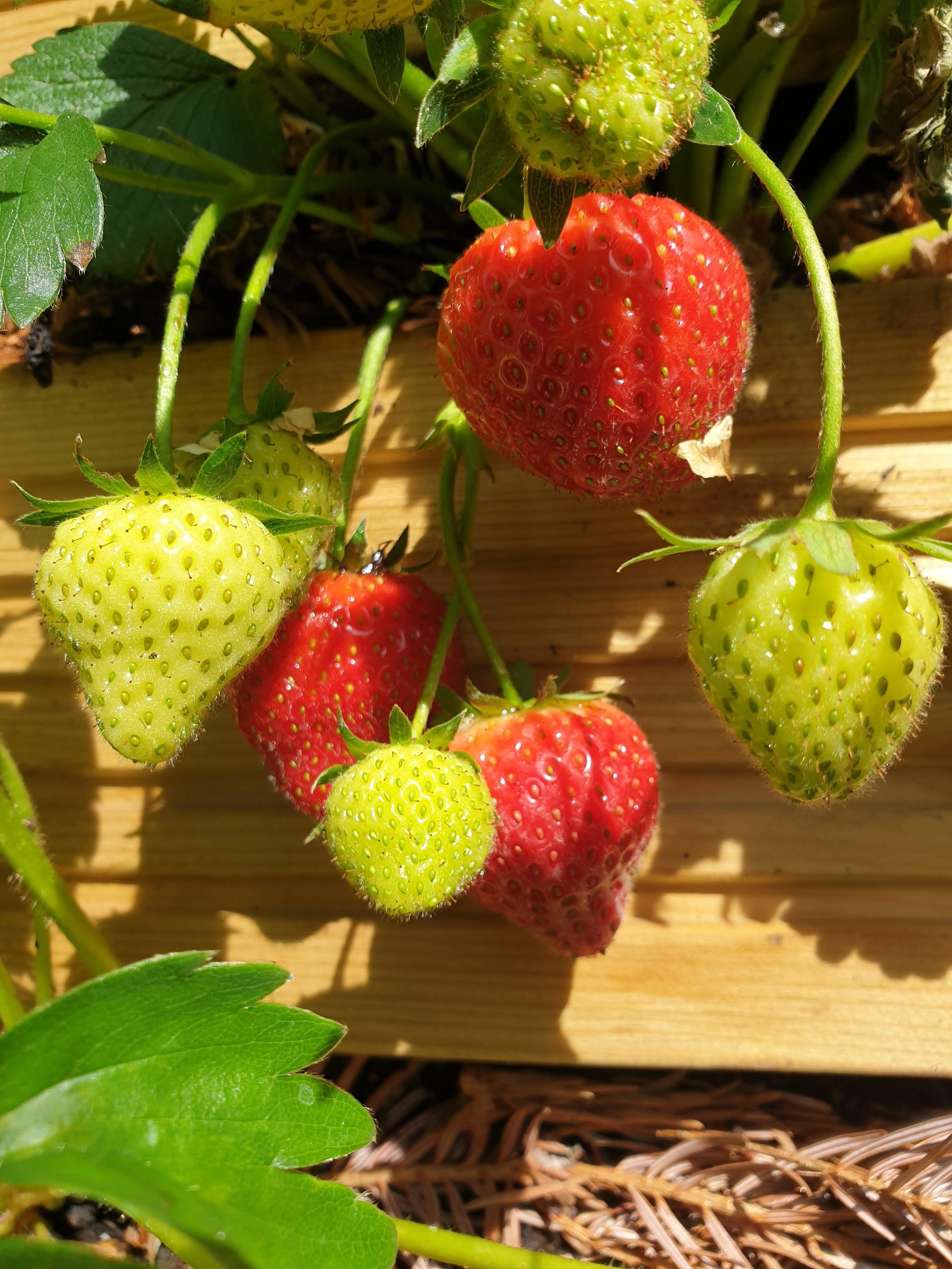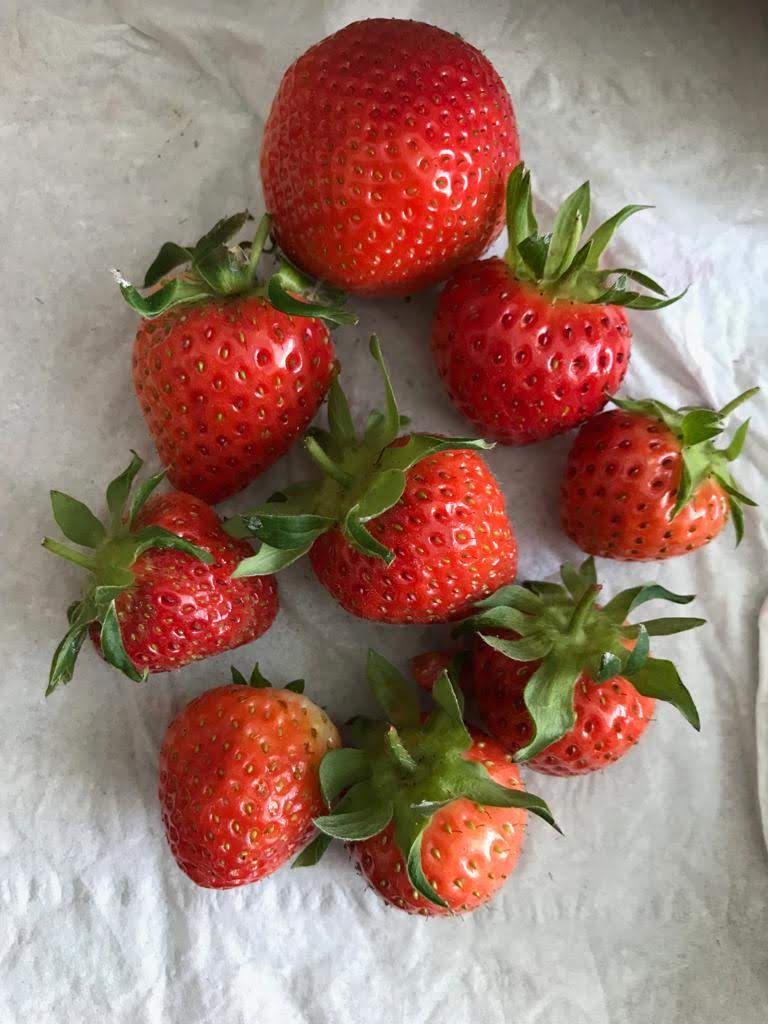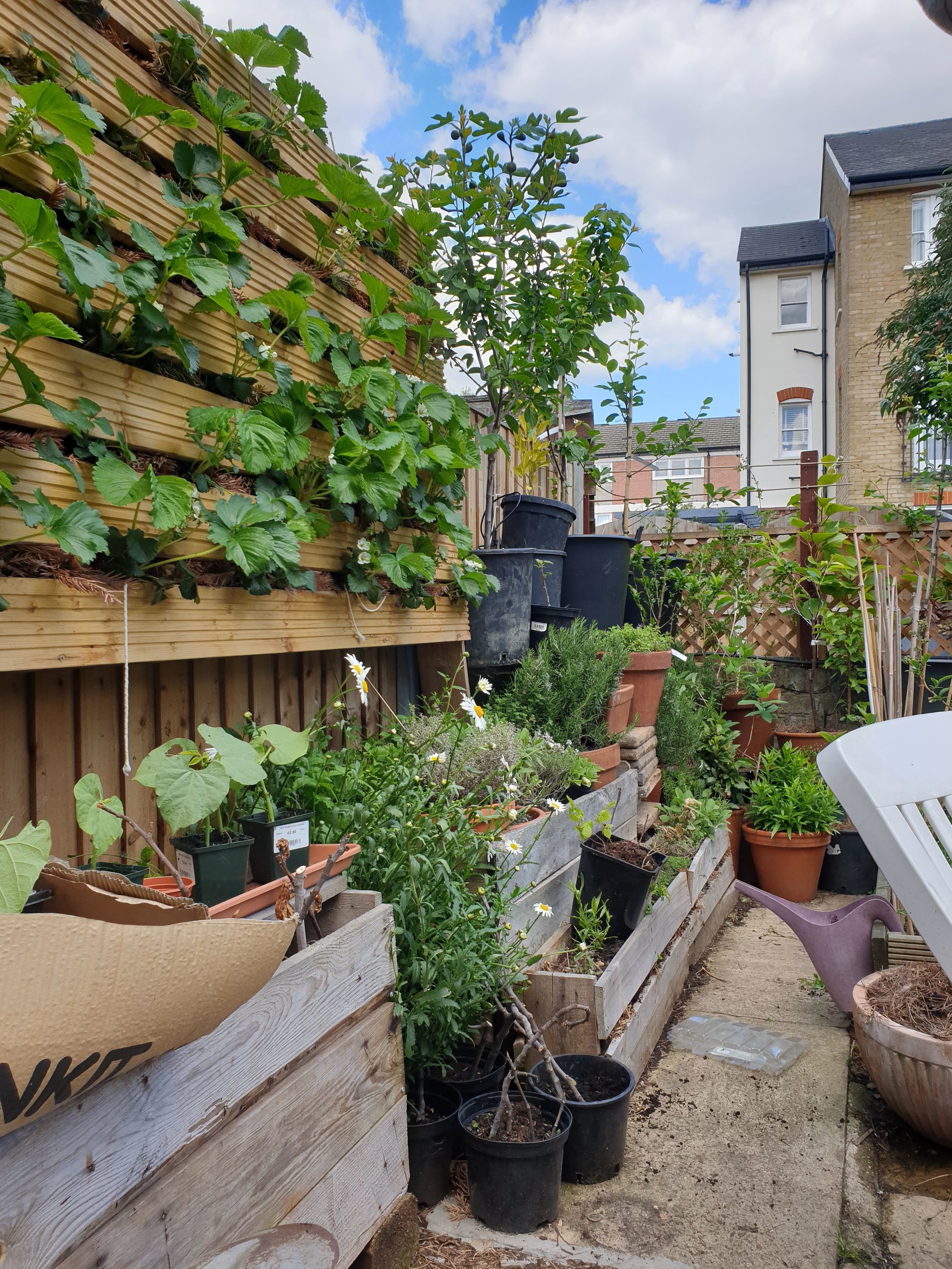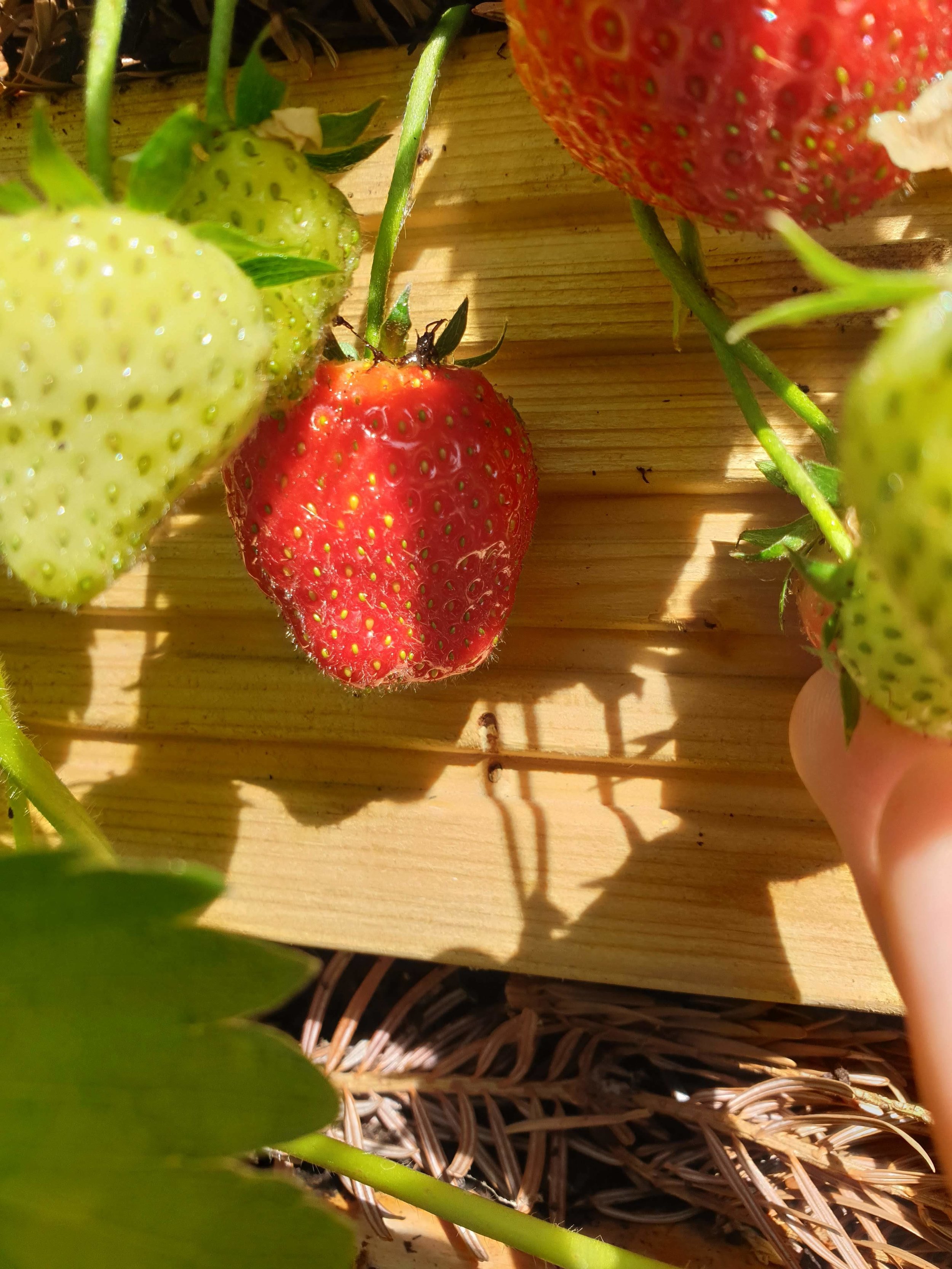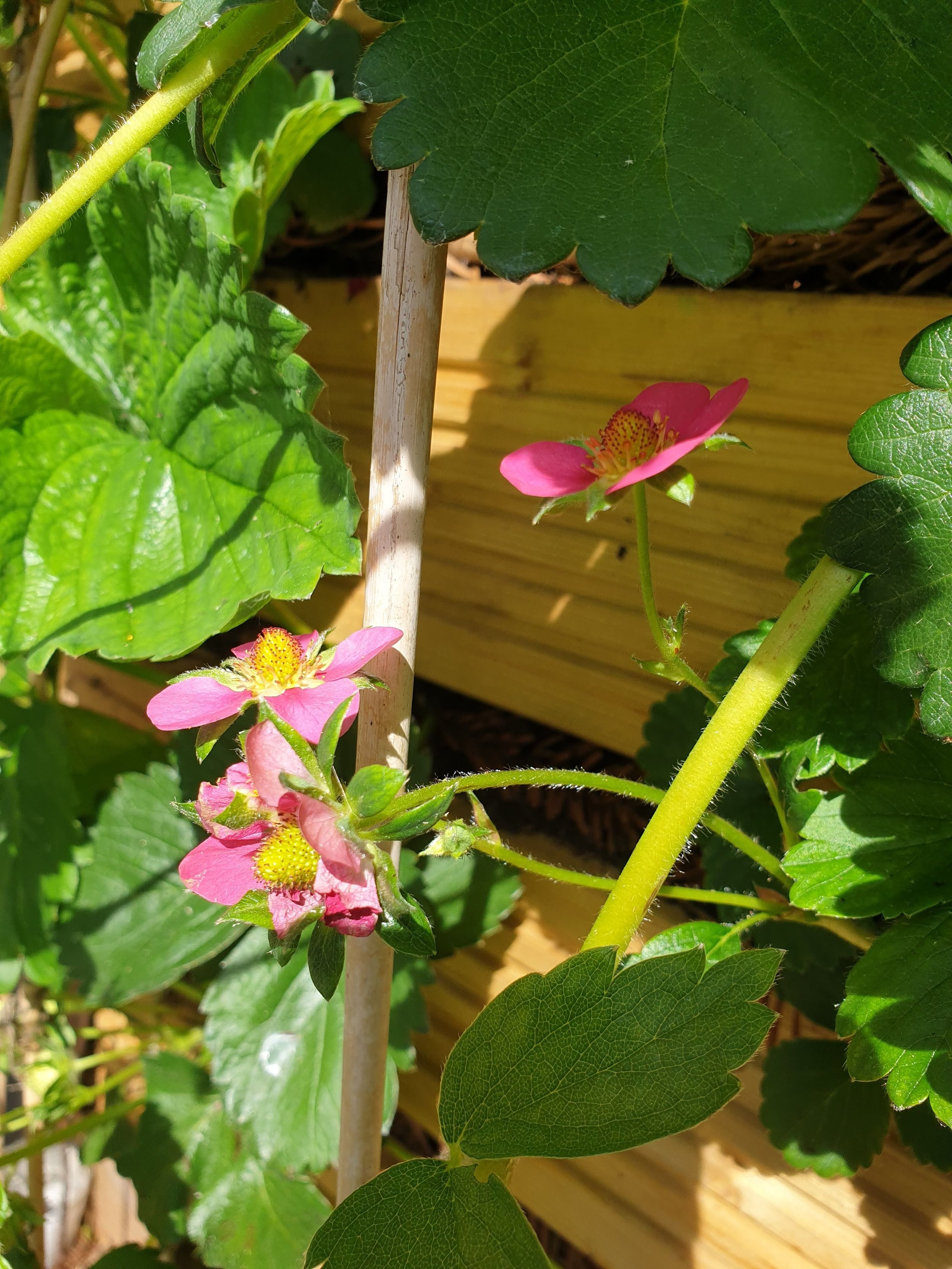Urban Garden Project: How To Grow Strawberries Vertically
Our vertical strawberry planter, with 40 plants.
Space has always been a bit of an issue in our small,urban garden. We don’t have a lot of direct light in the autumn and winter months, and we have (like most people) three bordering fences, which create quite a lot of shade as it’s such a small garden. Over the past few years, I’ve tried to grow strawberries with mixed success. The first year I tried growing them in a shallow pit, this wasn’t great and I didn’t really get any strawberries. They also take a lot of floor space as they spread out.
Last year I (my husband) built a planter from old pallet wood and hung it on a fence where it would receive 6-8 hours of light. See images below.
This worked out really well as the strawberries received lots of light and had nutrients ready and available. The pallet timber cost us nothing which was a plus. We had a big harvest of juicy strawberries (the plants were mature and produce well in second and third years). In addition to this, the planter took up no floor space - so we could still plant other things below it (see the Asiatic Lillies on the middle image). We had strawberries daily in June and early July, it was so refreshing to go out to the garden and get fresh food there and then. The only problem with this however, was that with the summer heatwave of 2018 the planter dried out and sadly while I was away all the strawberries died! A real bummer, only one plant of twenty survived.
I addressed the water problem, by creating an automatic watering system with thanks to LinkTap. More info on how I did this can be found here - not only does the system save water but it saves so much time too. However for 2019, I needed to find new strawberries and I wanted to create a bigger hanging planter so that we’d end up with more juicy berries.
We managed to find some fairly priced timber, it was actually decking board which was at a low cost, and used it to construct a vertical wall about 4ft in height and about 25cm in depth. The basic design meant that the hanger was tied to the fence for extra support but its main support came from the two legs which carried the weight. While we know it’s not the best designed or best put-together vertical planter, we also know that it does the job. This is a concept that we embrace, we don’t think that gardening or growing has to be about perfection, spending lots of money looking 10/10 - the function of our set up is the most important thing for us. To allow us to grow food, easily, effectively and without spending a lot of money. Reusing, recycling and repurposing are things we are big on - as you might know from our urban gardening series from last year, building beds from old pallets.
The back of the hanger was covered with a mixture of more decking-board and a thin sheet of repurposed plastic sheet which we had in the garden. This was to reduce the overall weight of the hanger. Below is an image of the final product with some strawberries planted. It can be easily assembled with screws or nails and doesn’t take a lot of time to do so.
The newly made vertical plant hanger on the left of the image. The older one placed on the floor as a herb container
As mentioned, in 2018, we were left with no strawberry plants. We needed to find some urgently, all of our runners died too! We went from around 20 strawberry plants to about 3 three! We wrote to our friends at DT Brown and Mr Fothergills who provided us with two types of strawberries: Elegance A+ and Toscana F1. They were in their dormant state, don’t be alarmed when ordering these - they will ‘wake up’ with a bit of TLC and warmth. We prefer to plant our strawberries before the plants take off and come out of the dormancy state. Feb-April is ideal in our opinion.
‘Elegance’ is a strawberry that grew very well and produced a good amount of strawberries for its first year in June and July. They were really delicious. The second was ‘Toscana F1’, an ever-bearing fruit, with pink flowers, which produces throughout the summer. We’ve not had much luck with this one, as fruits have been small, but we can see its continually bearing fruit, albeit small fruits. We have a feeling however that ‘Toscana’ will be a lot stronger next year and in the third year, as this is the case for most strawberries, meaning we’ll be picking big strawberries!
We planted around 40 strawberries, a mix of ‘Elegance’ and ‘Toscana’, it’s now August and they’ve all produced runners which have spread across the garden, into planters and pots. We’ll let these grow and use them next year, however 40 strawberries can produce around 120 runners - so a lot of the runners have ended up in the compost heap.
Pros of the vertical hanger:
More space means there’s a much higher yield, this is a huge plus and we had strawberries at least for a month solid, a good handful each day.
Large numbers means there were lots of runners, meaning we can cultivate these and keep them for a new location or to give to friends.
When running with the water system we created, the system works very well, very little maintenance is needed. Water drips from the top through to the plants further down.
Cons of the vertical hanger:
You need to have an afternoon to design and assemble your hanger. We didn’t make plans and went straight into it on the go.
If you don’t have a water system, you’ll have to water the strawberries a lot - almost daily to keep up with producing later fruits
If you don’t want the ‘mess’ of runners, you’ll have to maintain these and trim them every week. It’s better to do a little work every now and then over a large amount every month.
This has been our first year with these plants, they’re young plants and already produced a lot of strawberries - we’d certainly recommend ‘Elegance’ as a first-year plant, remember, yields will only get better each year! Next year we’ll have even more strawberries plus a good amount of young plants from the runners we will plant. We’ll have to make sure to fertilise the space regularly however as space is tight in the hanger, but growing vertically has its perks for sure.
The strawberry planter can be seen on the left of the image, barely recognisable with leaves and runners!
We’ve just added 2 square meters of growing space to our garden that previously didn’t exist. You’re making and creating space that didn’t previously exist without altering the boundaries of your growing space. If you’re in a small garden or plot, even a balcony, growing vertically is the way forward if you’re able to wrap your head around the container system - or if you have enough of a budget to buy something ready-made.
If you have any luck growing strawberries vertically, please let me know by commenting below or messaging me on Instagram: @imserenalee.
Happy growing, and thanks for reading!
Serena



